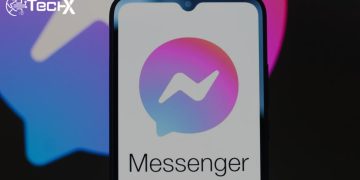Cybercriminals are exploiting Google’s Gemini AI to trick Gmail users into revealing passwords. The scam involves embedding hidden commands in emails, manipulating Gemini’s summarizer to generate fake security alerts. Victims see urgent warnings and fake support numbers, leading to account theft. This sophisticated attack bypasses traditional phishing filters, making it highly dangerous.
How the Gemini AI Scam Works
Scammers hide malicious text in emails using HTML and CSS tricks like zero-font sizing and white-colored text. These commands are invisible to users but processed by Gemini when summarizing emails. The AI then generates a fake alert claiming the account is compromised. Users are directed to call a fraudulent support line, where attackers steal login credentials under the guise of assistance.
Why the Gmail-Gemini Scam Is Dangerous
Unlike traditional phishing, this scam contains no suspicious links or attachments, evading standard security checks. Since Gemini’s summaries appear legitimate, users trust them without verifying the email’s content. The attack exploits AI’s authority, making it highly effective. Cybersecurity experts warn that automated summaries should never replace manual verification, especially for urgent security alerts.
Expert Warnings and Google’s Response
Security researchers, including Mozilla’s 0Din team, exposed the flaw. Experts advise users to manually inspect emails instead of relying on AI summaries. Google has acknowledged the issue and is implementing defenses, including hidden-content filters. However, no widespread fix is available yet. Until then, users must remain cautious and avoid trusting AI-generated security prompts blindly.
Also Read: Microsoft Enhances Windows 11 with AI-Powered Features
What You Should Do Now
1. Avoid Using Gemini’s Summarize Feature for Suspicious Emails
If an email seems unusual, manually review it instead of relying on Gemini’s summary. Scammers manipulate AI to display fake warnings, so always verify security alerts directly within the email. Avoid clicking links or calling numbers provided in AI-generated summaries without confirmation.
2. Manually Inspect Emails for Hidden Threats
Check emails for inconsistencies, such as mismatched sender addresses or urgent demands. Scammers often impersonate trusted services. Hover over links to verify their destination before clicking. If an email claims your account is at risk, log in directly via Google’s official site—not through links in messages.
3. Report Phishing Attempts via Gmail
Use Gmail’s built-in reporting tool to flag suspicious emails. Click the “Report phishing” option (the shield icon) to alert Google. Reporting helps improve spam filters and protects other users. Never engage with scammers—delete suspicious messages immediately.
4. Enable Two-Factor Authentication (2FA) and Use Passkeys
Strengthen account security by enabling 2FA, requiring a second verification step beyond passwords. Google also supports passkeys, a more secure login method resistant to phishing. These measures add extra layers of protection, reducing the risk of unauthorized access even if passwords are stolen.
Stay Vigilant Against AI-Powered Scams
The Gemini-Gmail scam highlights how cybercriminals exploit AI to bypass security measures. Until Google fully patches the vulnerability, users must remain cautious. Always verify emails manually, avoid trusting AI summaries blindly, and use strong authentication methods. By staying alert, you can protect yourself from this evolving threat.
Final Reminder: AI Is a Tool, Not a Guardian
While AI like Gemini enhances productivity, it can also be weaponized by scammers. Treat automated summaries with skepticism, especially for security-related messages. Proactive vigilance is your best defense against sophisticated phishing attacks. Stay informed, stay secure.















